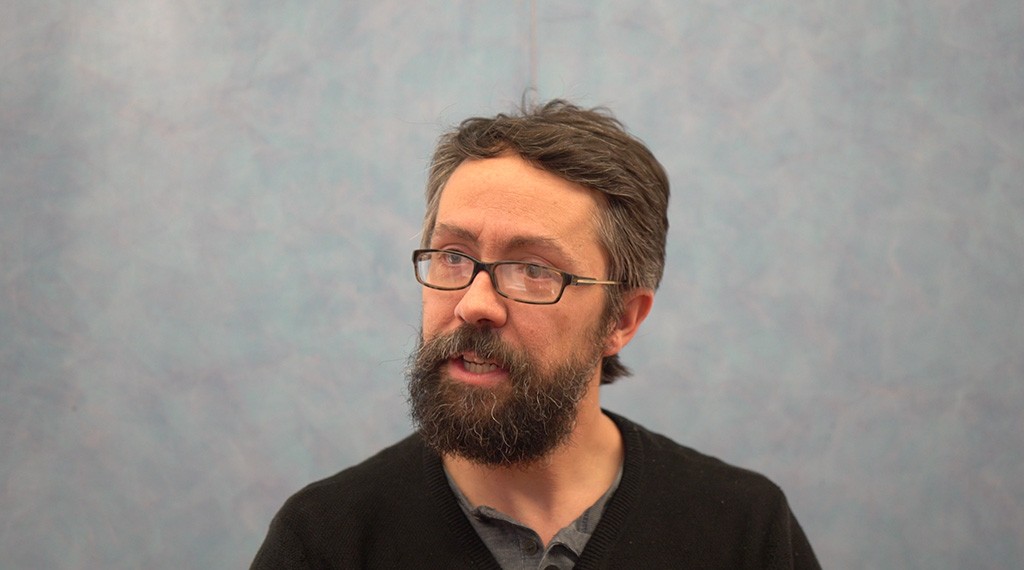
Lower infant mortality is the main factor behind the reduction in lifespan inequality
What global trends have emerged in human lifespan in the past 65 years? This vital question was addressed by Iñaki Permanyer, Ramón y Cajal Fellow at the Center for Demographic Studies (CED) in Barcelona, in his talk on 7 May in the BBVA Foundation as part of the Demography Today Lecture Series 2017-2018.
23 May, 2018
Permanyer presented the results of a study documenting global trends in longevity, using data from the UN World Population Prospects. “The main factor driving the sustained decline in global lifespan inequality is the improvement in infant mortality. Since 1950, infant mortality has come down strongly, and it is this that has contributed most to reducing age-of-death disparities,” remarked Permanyer during an interview on the main findings of the study.
Its analysis of changes in the worldwide dispersion of age at death has brought some illuminating results. But what is so important about this variability in the age at which death occurs? Permanyer explains that as people live longer, ages at death become increasingly concentrated around the average. This may seem like a purely statistical effect, but in fact it has everything to do with behavior. “When you grow up in an environment where you can see that everyone dies at around the same age, with little variation, it means you can make life plans like pursuing a university degree or taking out a 30-year mortgage on a house, and make a series of economic decisions that you would never make if, for instance, people were dying off around you as you got older,” the speaker affirms. On the same topic of variability, the study also revealed that age-of-death inequality has widened appreciably since the 1950s among people of retirement age, i.e., the over 65s, in every world region and every country. “What this is saying – the researcher clarifies – is that older populations are increasingly heterogeneous, a finding that we believe has important implications for policies on pensions and other types of social care. The profile of those surviving is extremely diverse.”
Adult lifespan variability has also reduced overall, Permanyer notes, albeit with some plateaus and trend reversals. “Age-of-death inequality for the adult population aged over 15 initially reduced, i.e., as people lived longer, the dispersion of age at death became increasingly concentrated around the average. But at some point this improvement stalled. Although average longevity has increased, one would logically expect a higher concentration around that average, but the reality is otherwise,” he continues. This again supposes the existence of an increasingly heterogeneous elderly population, in which age of death has become more widely dispersed and not the reverse. For the speaker, a possible explanatory factor would be within-country socioeconomic differences: “Perhaps higher-income individuals in a given country are benefitting more from access to healthcare than those less well off. We have taken an in-depth look at the Spanish case, and have found that, in effect, those benefitting most from longevity increases have been those with more years of education, such as university graduates. Meantime, those who completed only primary education or less, have increased their longevity but to a lesser extent.” These are striking data in view of Spain having a public healthcare system, and will certainly require further study. Until then, Permanyer hazards some possible explanations: “I don’t know, but it could have to do with the recent strain on public healthcare provision, since people with more money obviously have the option of going to other centers. Another cause could be that people with more years of education at times have a healthier lifestyle, maybe drinking or smoking less, etc. Of course each situation is different, but there are studies that draw this kind of association.”
Another finding of the study is that most of the world variability in age at death can be attributed to within-country variability. “We have seen that differences are primarily within individual countries, because with some infants dying between 0 and 1 and other people living to 90-100, the gap is obviously enormous. So when we carry out inter-country comparisons, technically what we are doing is to compare life expectancies between countries, meaning the dispersion is not so wide. I might, for instance, compare Japan, where women have an average lifespan of eighty odd years, with a country in Africa where life expectancy is closer to 60. The gap between that 60 and that 80 is generally not going to be as wide as it would within a country where children die young. This is a purely technical matter but it is something we have to measure so we can better understand today’s process of globalization.”
The challenge now before us is the emergence of diverging trends in longevity and age-of-death inequality among the world’s elderly population. “This divergence is particularly marked among those of retirement age; although the study is very general we are talking about a growing heterogeneity among people aged 65 and over. In fact when you look at these population forecasts and what will be happening in the next 10, 20, 30 or 40 years, a major concern for many European countries is that more and more people will be reaching retirement age, and leaving the active population, and if, as well as being more numerous, this group is also more diverse, it is a warning sign that one-size-fits-all policies are not going to work.”
